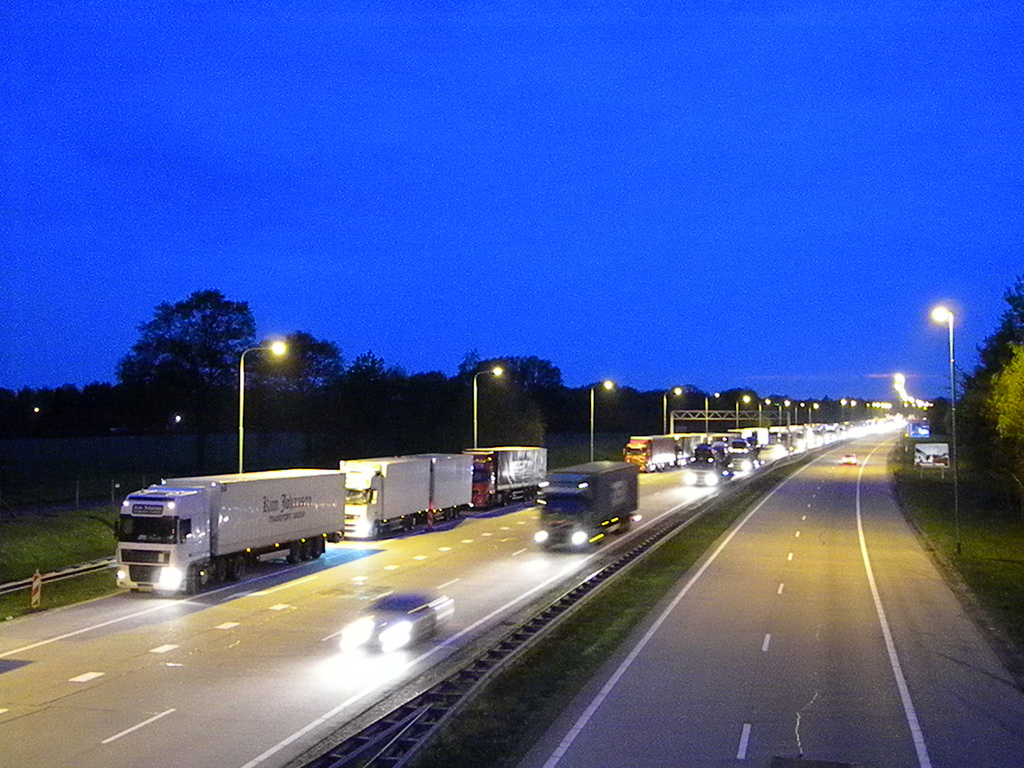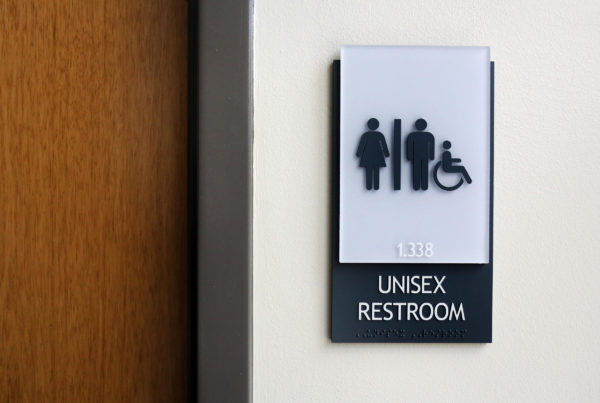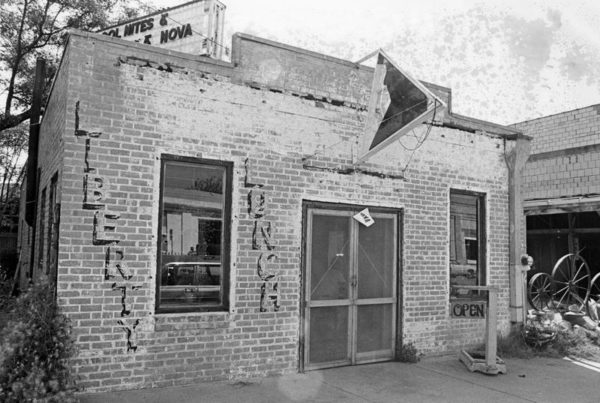The discovery this weekend of dozens of immigrants trapped in a sweltering, unventilated tractor-trailer in a San Antonio Walmart parking lot has riveted the nation, and renewed a conversation about how to prevent such tragedies, and who can be held accountable. A 10th person has died, and the 60-year-old driver of the truck, James Matthew Bradley Jr., has been charged by federal authorities with illegally transporting immigrants.
Joey Palacios of Texas Public Radio reported on Bradley’s arraignment, which happened Monday.
Bradley was escorted into the courtroom wearing shackles on his arms and legs. He only spoke about five times with yes-and-no answers. The arraignment lasted about 10 minutes before he was placed back into custody.
The criminal complaint states that Bradley said he was taking the trailer from Schaller, Iowa, to Brownsville, Texas to deliver it to a new owner. He said he wasn’t aware of the contents. He told authorities he stopped in Laredo to have it washed and detailed. He arrived in San Antonio late Saturday or early Sunday morning.
He said he heard banging and noises from the trailer when he stopped at the Walmart to use the restroom. When he opened the doors, he was knocked over by about 30 to 40 people running out of the trailer. Inside, there were bodies on the floor.
The complaint says Bradley called his wife but did not call police. Investigators also interviewed survivors who provided conflicting information to Bradley’s account. San Antonio Police say a Walmart worker alerted authorities when a migrant asked for water. There were between 70 and nearly 200 people in the trailer, according to different accounts.
Texas Public Radio Reporter Carson Frame looks at how the terms “human trafficking” and “human smuggling” differ, and the legal ramifications of those differences, in light of the San Antonio deaths.
Since the case first came to light, some sources in the media have been using the terms “human trafficking” and “human smuggling” interchangeably. But they’re two very different crimes.
Kerry Ward, an associate professor of history at Rice University who studies forced migration.
“So, I think people are often confused about the difference between human smuggling and human trafficking because they often blend into each other. But they’re distinct crimes. Human trafficking is a crime against a person while human smuggling is a crime against a border,” Ward says.
Human trafficking doesn’t necessarily involve movement. People can be trafficked for forced labor purposes anywhere, even in their own homes.
Smuggling, on the other hand, involves transporting people illegally across a border.
“Now, sometimes the people who are engaged in being smuggled have done so voluntarily, so they’ve paid money to be shipped across the border. But what often happens is that these people become vulnerable to further exploitation and become trafficked when they are held against their will, often for labor purposes,” Ward adds.
Stacie Jonas, the managing attorney for Texas Rio Grande Legal Aid, says human trafficking victims have more options for legal recourse.
“Victims of human trafficking are eligible for certain legal remedies and protections that are not always available to people who were smuggled,” she says.
Right now, Jonas says it appears the case in San Antonio is being charged as a crime involving smuggling. She says she hopes that the people rescued from the tractor- trailer are screened to determine if they are also victims of trafficking.
The type smuggling tragedy that occurred in San Antonio is more common than many think: According to experts, 25 percent of all human-trafficking victims nationwide have, at some point, crossed through Texas, often in the back of a tractor-trailer. Since the city is at the intersection of three major interstates, San Antonio has become a kind of epicenter for smuggling operations like the one James Matthew Bradley Jr. was involved in.
Elissa Steglich is with the Immigration Clinic at the University of Texas at Austin Law School, and told Texas Standard that Bradley was likely a small player in a much larger operation. He’s facing serious charges by the federal government, but is only being charged under one criminal complaint rather than one for each of the 10 deaths, so far.
Steglich says the U.S attorney’s office has a range of options when it comes to prosecuting Bradley.
“There was certainly a matter of expediency in terms of putting forward a criminal complaint and ensuring that a case could be initiated as quickly as possible,” she says.
Steglich says Bradley could have been charged for each death, which is what happened in a similar case in 2003. That incident is considered the deadliest human-smuggling case in U.S history: 19 South American immigrants were found dead in a tractor-trailer near Victoria, Texas. The driver in that case escaped a death sentence, and Steglich says the death penalty is similarly less likely for Bradley because he’s being tried in federal court.
“We’re unfortunately quite used to [the death penalty] in Texas, at the state level, but it is something that is pursued with much reluctance at the federal level,” she says.
Bradley is likely just one person in a much larger operation. Steglich says that may influence how prosecutors proceed; they could end up cutting a deal with Bradley and use him to get information about the larger smuggling ring.
It’s unclear, though, how much Bradley would actually know. Steglich says Bradley most likely would have taken money to transport the migrants, but may not know much else about the business.
“There are a lot of people involved, and not every individual is knowledgeable about the whole route, they may just be knowledgeable about their little piece,” she says.
And despite the horrors of this incident and others like it, not all migrants see smugglers in a negative light. Steglich says a survey by a University of Texas at El Paso professor shows that many migrants see smugglers as service providers, rather than as the “caricature of evil” she says is promoted by the Department of Homeland Security.
“[T]his is complicated and it’s frustrated by the fact that there is such tremendous need to migrate to escape violence, to escape dire economic circumstances, and the lack of legal, safe means to come to the United States,” she says.
Written by Caroline Covington.














